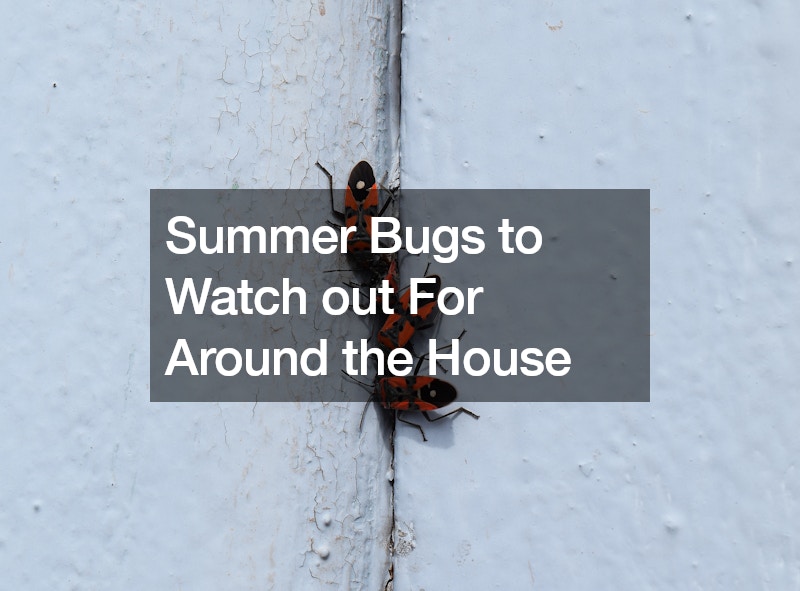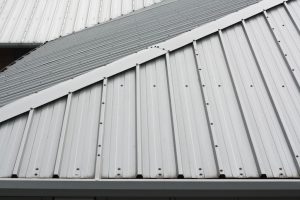Summer brings warmer weather and more time spent outdoors, but it also means an increase in bug activity around your home. While many insects are simply a nuisance, some can be damaging to your property or even pose health risks. Here’s a guide to some common summer bugs and how to deal with them:
Springtails
Description
Springtails are tiny, wingless insects, typically measuring between 1/16th and 1/8th of an inch long. They have a distinctive jumping ability due to a forked appendage at the tip of their abdomen. Springtails come in various colors, including white, gray, brown, and black.
Location
Springtails thrive in moist environments and are commonly found outdoors in areas with decaying leaves or organic matter. They can easily enter your home through cracks around windows, doors, or the foundation. Indoors, you’ll likely find them in damp basements, bathrooms, laundry rooms, or near leaky pipes.
Harmful Effects
While harmless themselves, springtails can be a nuisance due to their large numbers. They don’t bite or sting humans, nor do they carry any diseases. However, their presence might indicate moisture problems in your home.
Getting Rid of Them
The best way to control springtails is to address moisture issues in your home. Repair leaky faucets or pipes, and ensure proper ventilation in damp areas like basements and crawl spaces. You can vacuum up springtails indoors, but be aware they can jump and may escape the vacuum. For persistent infestations, consider using a desiccant dust containing silica gel around potential entry points.
Boxelder Bugs
Description
Boxelder bugs are shield-shaped insects with black bodies and distinctive red markings on their backs. Adults are about ½ inch long.
Location
Boxelder bugs spend most of their lives feeding on boxelder trees. In the fall, they seek shelter for the winter and often congregate on sunny sides of houses. They can cluster around windows, doors, siding, and even crawl inside through cracks.
Harmful Effects
Boxelder bugs do not bite or sting humans and don’t pose a health threat. However, they can be a nuisance when they invade your home in large numbers. If crushed, they release a foul-smelling odor and can stain carpets or walls.
Getting rid of them
Prevent boxelder bug infestations by sealing cracks around windows, doors, and siding in the fall before they seek shelter. Trim tree branches away from your house to eliminate easy access points. If you see boxelder bugs gathering outside, you can try spraying them with insecticidal soap to deter them from entering your home. For large infestations inside your house, consider using a store-bought insecticide or calling a boxelder bug control professional.
Oriental Cockroaches
Description
Oriental cockroaches are one of the largest cockroach species, measuring up to 1 inch long. They are dark brown or black with a shiny appearance. Unlike the smaller German cockroach, oriental cockroaches prefer damp, cool areas like basements, crawl spaces, or under porches.
Location
Oriental cockroaches live outdoors but can occasionally wander into homes through cracks in the foundation, around pipes, or through floor drains. They are attracted to moisture and decaying organic matter.
Harmful Effects
While oriental cockroaches don’t bite humans, they can contaminate food and surfaces with bacteria and allergens. Their presence can also indicate moisture problems in your home, which can lead to mold growth.
Getting Rid of Them
The key to controlling oriental cockroaches is to address moisture issues in your home. Seal cracks around pipes and drains, and eliminate any sources of standing water. You can use baits specifically designed for oriental cockroaches, but for persistent infestations, it’s best to call a professional pest control service.
Brown Recluse Spiders: A Cause for Caution
While most summer bugs are just a nuisance, brown recluse spiders pose a different threat. These venomous spiders, also known as fiddleback spiders for their violin-shaped marking, are a concern in many parts of the United States. Here’s what you need to know:
Identification
Brown recluse spiders are typically light brown to dark brown and grow to about ½ inch long, not including their legs. Look for the violin-shaped marking on the back of the head (cephalothorax).
Location
These spiders prefer dark, undisturbed areas and are commonly found in basements, garages, closets, and attics. They can also hide behind furniture, in boxes, or in crawl spaces.
Danger
Brown recluse spider bites can be serious, causing skin lesions and tissue necrosis (tissue death). If left untreated, bites can lead to scarring. While not all bites result in serious complications, it’s important to seek medical attention immediately if you suspect a brown recluse spider bite.
Getting Rid of Them
The best way to control brown recluse spiders is to limit their hiding places. Declutter basements, garages, and other storage areas. Regularly vacuum and remove cobwebs. Seal cracks and gaps around windows, doors, and the foundation to prevent them from entering your home. Consider using store-bought traps designed for spiders, but be sure to follow the instructions carefully. If you suspect a brown recluse infestation, it’s best to contact a professional pest control service.
.







